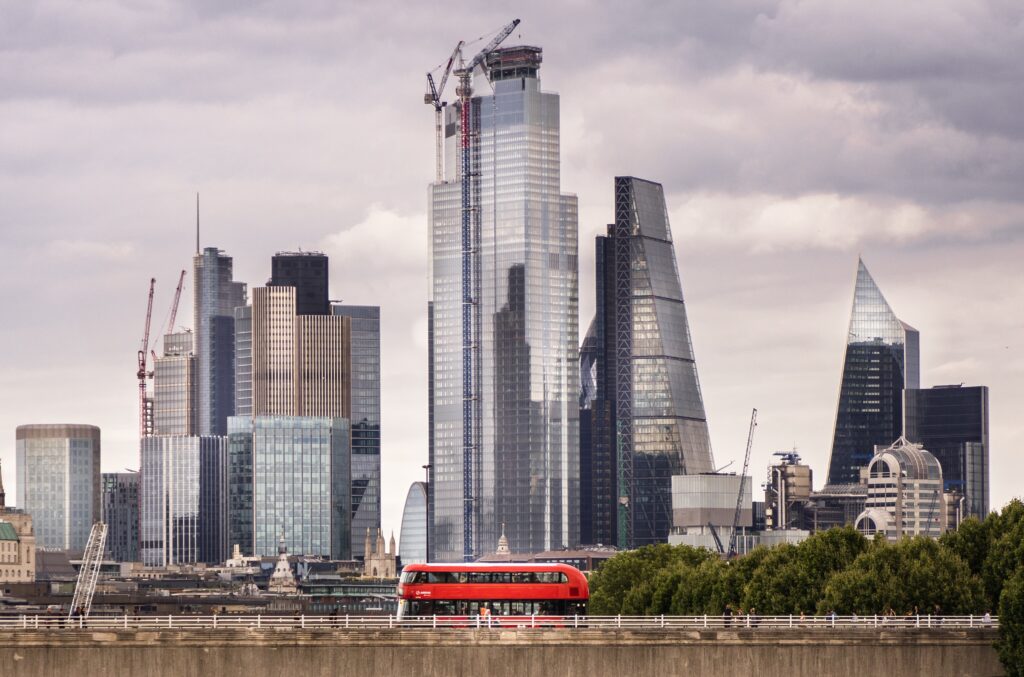Real incidents highlight hidden risks for maintenance crews working at height.
LONDON, UK. July 24th 2025 – A new ranking has revealed the five most dangerous buildings in the UK to maintain, drawing attention to the safety challenges faced by those working at height on some of the country’s most iconic towers.
Published by powered access specialists Access Platform Sales (APS), the analysis ranks buildings with known maintenance risks and structural issues, using publicly documented incidents as well as industry insights.
Buildings featured in the list include The Leadenhall Building, also known as “The Cheesegrater”, where fractured structural bolts triggered a £6 million replacement programme, and 8 Canada Square (HSBC Tower), the site of a fatal crane collapse during its construction and subsequent falling glass panels.
In Liverpool, the Unity Building ranks due to a 2024 platform failure that resulted in two fatalities during cladding works. Other buildings in the top five include One Canada Square and 22 Bishopsgate, both of which pose ongoing safety risks due to their complex façades and exposed working environments.
Top 5 Most Dangerous Buildings to Maintain in the UK
1. The Leadenhall Building (“The Cheesegrater”), London
In 2014 and 2015, structural bolts fell from the fifth floor, prompting safety cordons and a full structural review. The sloped façade forces access crews to work under overhangs using boom lifts over public areas.
2. 8 Canada Square (HSBC Tower), London
During construction in 2000, a crane collapse killed three workers. Since completion, multiple glass panels have fallen from upper floors, highlighting risks for maintenance teams working on the curtain wall façade.
3. Unity Building, Liverpool
In September 2024, a father and son died after the brakes on a cladding platform failed during routine façade works. The platform fell more than 100 feet between the 21st and 7th floors.
In September 2024, a father and son died after the brakes on a cladding platform failed during routine façade works. The platform fell more than 100 feet between the 21st and 7th floors.
4. One Canada Square, London
While no major incidents have been recorded, One Canada Square is widely regarded by industry specialists as high risk due to its outdated BMU system and narrow rooftop access. Maintenance teams often rely on boom lifts in wind-prone conditions.
While no major incidents have been recorded, One Canada Square is widely regarded by industry specialists as high risk due to its outdated BMU system and narrow rooftop access. Maintenance teams often rely on boom lifts in wind-prone conditions.
5. 22 Bishopsgate, London
London’s tallest office tower features recessed glass façades and overhangs that increase access complexity. In 2017, a neighbouring crane struck The Leadenhall Building, highlighting the risks associated with dense, high-rise city clusters.
“The design of modern towers has evolved dramatically — but safe access hasn’t always kept pace. When you combine height, wind exposure, and complex geometry, even routine maintenance becomes a high-risk operation. That’s why specialist planning and the right equipment are essential — not just for efficiency, but to protect the people doing the work.”
— Andy Bray, Managing Director, Access Platform Sales
What Goes Up Needs a Plan to Stay Safe
These buildings may define the skyline, but it’s the unseen work behind the scenes that keeps them safe, compliant and operational. As tower design becomes ever more ambitious, so too must the approach to access and maintenance.
Without proper planning and the right equipment, high-rise maintenance poses serious operational risks. Powered access platforms provide the flexibility, reach and control needed to safely navigate complex façades and confined zones while reducing time spent at height.
Whether for routine inspection, emergency repairs or scheduled cleaning, safe high-rise maintenance starts on the ground.
ENDS

